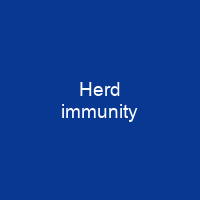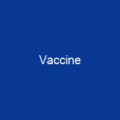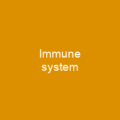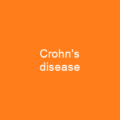Herd immunity is a form of indirect protection from infectious disease. It occurs when a sufficient percentage of a population has become immune to an infection. The greater the proportion of immune individuals in a community, the smaller the probability that non-immune individuals will come into contact with an infectious individual. Once the herd immunity threshold has been reached, disease gradually disappears from a population.
About Herd immunity in brief

For these reasons, in certain populations it may be necessary to immunize high- Risk persons or moderate-risk persons or high- risk persons of both sexes to escape herd immunity from certain strains of STIs. The exact herd immunityreshold varies depending on the disease. An example of a disease with a low threshold is influenza, with a HIT of 33–44%. A high threshold is the measles, with an HIT of 92–95%. Some individuals either cannot develop immunity after vaccination or for medical reasons cannot be vaccinated. A portion of those vaccinated may not develop long-term immunity. Vaccine contraindications may prevent certain individuals from being vaccinated. The prioritization of school-age children for seasonal flu immunization, which is more effective than vaccinating the elderly, has been shown to create a certain degree of protection for the elderly. Vaccinating adults against pertussis reduces pertussi incidence in infants too young to be vaccinated, who are at the greatest risk of complications. This is especially important for close family members, who account for most of the transmissions to young infants. Vaccinating children against pneumococcus and rotavirus reduces pneumococcal disease incidence among younger, unvaccinated siblings, who do not normally receive these vaccines. In the same manner, children receiving vaccines against pneumococcus has had the effect of reducing pneumococci-attributable hospitalizations for older children and adults, who don’t normally receive them.
You want to know more about Herd immunity?
This page is based on the article Herd immunity published in Wikipedia (as of Dec. 24, 2020) and was automatically summarized using artificial intelligence.







